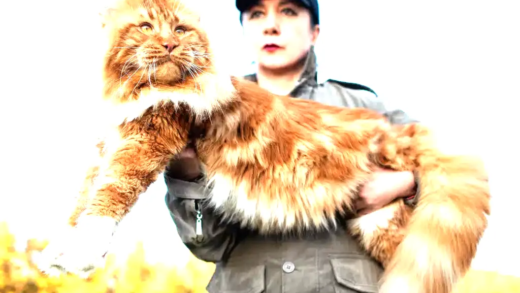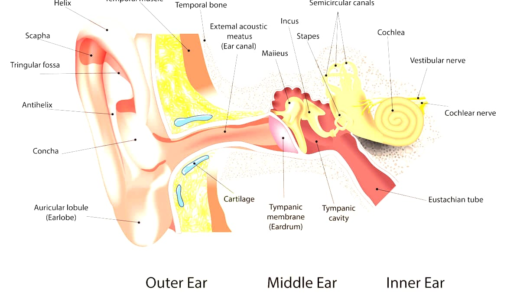This article explores the wild cats of the U.S., detailing their species, habitats, unique characteristics, hunting behaviors, conservation statuses, and threats they face. It emphasizes the interactions between humans and wild cats, conservation efforts in place, and how individuals can contribute to protecting these vital species.
Meet the Wild Cats: Introduction to the Six Wild Cats in the U.S.
Wild cats in the U.S. are fascinating creatures that play a vital role in our ecosystems. In America, six species of wild cats can be found, each with unique traits and habitats. These include:
- Cougar: Also known as the mountain lion, this large cat roams across various terrains.
- Bobcat: Smaller than the cougar, bobcats are adaptable hunters found in diverse environments.
- Jaguar: Although primarily found in South America, jaguars have a small range extending into Arizona.
- Ocelot: These medium-sized cats prefer dense forests and are known for their striking coat patterns.
- Canada Lynx: Adapted to colder climates, they have large paws that help them navigate snowy terrains.
- Florida Panther: A subspecies of the cougar, it is critically endangered and primarily found in Florida.
Understanding these species is crucial for their conservation and for appreciating the biodiversity of wild cats in America.
Home Sweet Home: Typical Habitats of Wild Cats in the U.S.
Wild cats in the U.S. inhabit a range of environments that cater to their survival needs. These habitats include:
- Forests: Many wild cats, like the bobcat and ocelot, thrive in wooded areas where they can hide and hunt.
- Mountains: Cougars are commonly found in mountainous regions, utilizing the rugged terrain for hunting.
- Swamps: The Florida panther resides in the wetlands of Florida, where its prey is abundant.
- Deserts: Some wild cats, such as the jaguar, can adapt to arid conditions, although they prefer denser vegetation.
- Grasslands: Open areas provide hunting grounds for many wild cats, offering visibility and space to stalk prey.
Each wild cat species has adapted uniquely to its habitat, which is essential for their survival and reproduction.
Unique Features: Characteristics of Each Wild Cat Species
The characteristics of U.S. wild cats vary significantly, making each species unique. Here are some notable features:
- Cougar: Known for its powerful build and long tail, the cougar can weigh up to 220 pounds.
- Bobcat: With a distinctive bobbed tail and tufted ears, bobcats are agile and can leap up to 10 feet.
- Jaguar: Jaguars are the largest cats in the Americas, recognizable by their robust bodies and unique rosettes on their fur.
- Ocelot: Their striking coat is covered in dark spots and stripes, which provide excellent camouflage.
- Canada Lynx: This species is noted for its long legs and large, furry paws, aiding in walking on snow.
- Florida Panther: Characterized by its slender body and dark fur, it is critically endangered, with fewer than 200 individuals remaining.
Recognizing these unique features helps in understanding the diverse lifestyles and ecological roles of wild cats in the U.S.
Hunting Skills: How These Cats Hunt and Their Diet
Wild cats in the U.S. exhibit remarkable hunting skills that reflect their adaptations to various environments. Each species has developed unique methods for catching prey, tailored to its habitat and dietary needs. The primary food sources for these wild cats include:
- Cougar: Cougars are skilled stalkers, often hunting deer, small mammals, and birds. They rely on stealth and power, ambushing their prey.
- Bobcat: Bobcats are opportunistic hunters, preying on rodents, rabbits, and birds. They utilize their agility and sharp eyesight to spot and capture food.
- Jaguar: Jaguars primarily hunt in dense forests, targeting larger mammals like deer and capybaras. Their powerful jaws enable them to pierce shells of turtles and crush bones.
- Ocelot: Ocelots prefer to hunt small mammals, birds, and reptiles. Their nocturnal behavior aids in stalking unsuspecting prey under the cover of darkness.
- Canada Lynx: This species primarily feeds on snowshoe hares, relying on its keen sense of hearing to locate them beneath the snow.
- Florida Panther: Florida panthers hunt deer and smaller animals, using their agility to navigate through the wetlands where they reside.
Understanding the hunting behaviors of these wild cats provides insight into their survival strategies and ecological roles.
Conservation Status: Current Status of Each Wild Cat Species
The conservation status of wild cats in America varies significantly among species. Here’s a closer look at how each is faring:
- Cougar: Generally stable, but local populations face threats from habitat loss and hunting.
- Bobcat: Populations are healthy, thanks to their adaptability and widespread distribution across diverse habitats.
- Jaguar: Endangered in the U.S., with a very small population in Arizona. Habitat destruction and poaching are major concerns.
- Ocelot: Also endangered, particularly in Texas. Their numbers are declining due to habitat fragmentation.
- Canada Lynx: Listed as threatened, primarily due to loss of snowshoe hare populations and habitat encroachment.
- Florida Panther: Critically endangered, with fewer than 200 individuals remaining. Conservation efforts are crucial for their survival.
Monitoring the conservation status of these wild cats is essential for implementing effective protection measures and ensuring their survival.
Facing Threats: Specific Threats to Wild Cats Today
Wild cats in the U.S. face numerous threats that jeopardize their survival. These threats include:
- Habitat Loss: Urban development and agriculture are encroaching on wild cat habitats, reducing their living space and prey availability.
- Climate Change: Alterations in climate affect prey populations and the ecosystems that wild cats depend on.
- Poaching: Illegal hunting poses a significant risk to certain species, particularly the jaguar and ocelot.
- Human-Wild Cat Conflicts: Encounters with humans often lead to persecution, especially when cats prey on livestock.
- Road Mortality: Increased vehicle traffic results in many wild cats being killed on roads, particularly in areas of habitat fragmentation.
Addressing these threats is critical for the conservation of wild cats and the ecosystems they inhabit.
Humans and Wild Cats: Interactions and Impacts
Wild cats in the U.S. frequently interact with human populations, leading to both positive and negative consequences. Human activities have a profound impact on the lives of these magnificent creatures. For instance, habitat encroachment due to urban development and agriculture often forces wild cats to adapt to smaller and fragmented habitats. This can lead to increased sightings of cats in suburban areas, where they may come into conflict with pets and livestock.
Moreover, some people view these wild cats as a threat, which can result in negative perceptions and even persecution. However, there are also individuals and organizations actively working to coexist with these animals, promoting understanding and conservation. Efforts include educational programs that teach communities about the ecological roles of wild cats and how to avoid conflicts, such as securing trash and keeping pets indoors.
In summary, while wild cats face significant threats due to human activities, there is potential for positive interactions through education and awareness, fostering a more harmonious relationship.
Conservation Efforts: Protecting Wild Cats in the U.S.
Conservation status for wild cats in America is a pressing issue that has prompted various initiatives aimed at their protection. Organizations such as the Defenders of Wildlife and the National Wildlife Federation are at the forefront, working to raise awareness and implement strategies that help preserve these species.
Efforts include:
- Habitat Restoration: Restoring natural habitats and corridors to allow wild cats to thrive and maintain genetic diversity.
- Legislation: Advocating for laws that protect wild cat habitats and mitigate human-wild cat conflicts.
- Community Engagement: Involving local communities in conservation projects, such as citizen science initiatives that monitor wild cat populations.
- Research: Conducting studies to better understand wild cat behavior, ecology, and population dynamics, which inform conservation strategies.
These conservation efforts are essential for the survival of wild cats in the U.S. and highlight the importance of collaboration between wildlife agencies, communities, and individuals.
How You Can Help: Supporting Wild Cat Conservation
Individuals can play a vital role in supporting wild cat conservation efforts. Here are some actionable steps you can take:
- Educate Yourself and Others: Learn about the species of wild cats in the U.S. and their conservation status. Share this knowledge with friends and family to raise awareness.
- Support Conservation Organizations: Donate to or volunteer with organizations dedicated to the protection of wild cats and their habitats.
- Promote Safe Practices: Encourage practices that reduce human-wild cat conflicts, such as keeping pets indoors and securing trash.
- Advocate for Wildlife Protection: Participate in campaigns that advocate for policies and legislation aimed at protecting wild cats and their habitats.
- Report Sightings: If you encounter a wild cat, report the sighting to local wildlife authorities to assist in monitoring their populations.
By taking these steps, individuals can contribute to the conservation of wild cats in America, ensuring these remarkable creatures continue to thrive in their natural habitats.





Comments are closed.